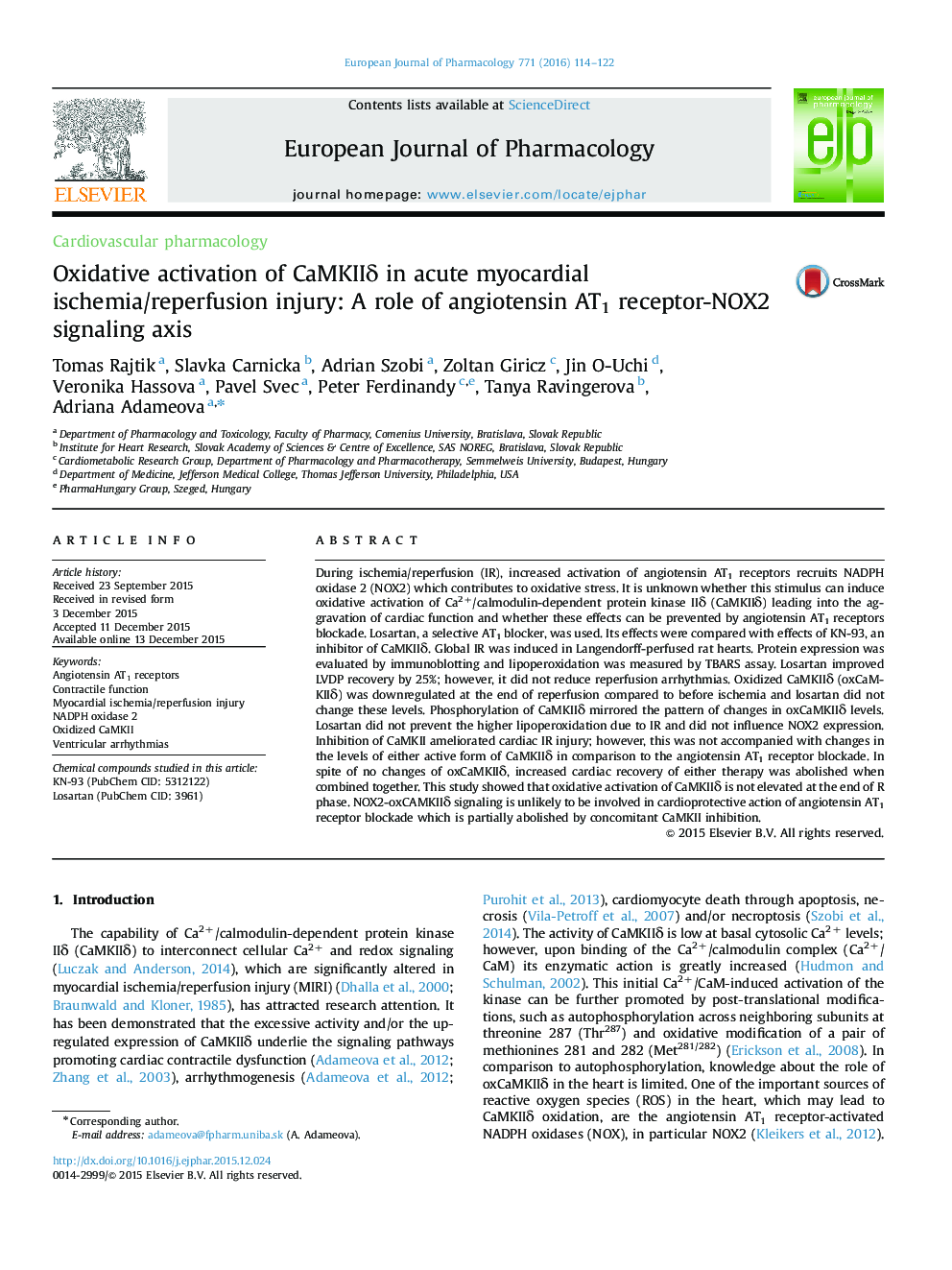| Article ID | Journal | Published Year | Pages | File Type |
|---|---|---|---|---|
| 2531036 | European Journal of Pharmacology | 2016 | 9 Pages |
During ischemia/reperfusion (IR), increased activation of angiotensin AT1 receptors recruits NADPH oxidase 2 (NOX2) which contributes to oxidative stress. It is unknown whether this stimulus can induce oxidative activation of Ca2+/calmodulin-dependent protein kinase IIδ (CaMKIIδ) leading into the aggravation of cardiac function and whether these effects can be prevented by angiotensin AT1 receptors blockade. Losartan, a selective AT1 blocker, was used. Its effects were compared with effects of KN-93, an inhibitor of CaMKIIδ. Global IR was induced in Langendorff-perfused rat hearts. Protein expression was evaluated by immunoblotting and lipoperoxidation was measured by TBARS assay. Losartan improved LVDP recovery by 25%; however, it did not reduce reperfusion arrhythmias. Oxidized CaMKIIδ (oxCaMKIIδ) was downregulated at the end of reperfusion compared to before ischemia and losartan did not change these levels. Phosphorylation of CaMKIIδ mirrored the pattern of changes in oxCaMKIIδ levels. Losartan did not prevent the higher lipoperoxidation due to IR and did not influence NOX2 expression. Inhibition of CaMKII ameliorated cardiac IR injury; however, this was not accompanied with changes in the levels of either active form of CaMKIIδ in comparison to the angiotensin AT1 receptor blockade. In spite of no changes of oxCaMKIIδ, increased cardiac recovery of either therapy was abolished when combined together. This study showed that oxidative activation of CaMKIIδ is not elevated at the end of R phase. NOX2-oxCAMKIIδ signaling is unlikely to be involved in cardioprotective action of angiotensin AT1 receptor blockade which is partially abolished by concomitant CaMKII inhibition.
